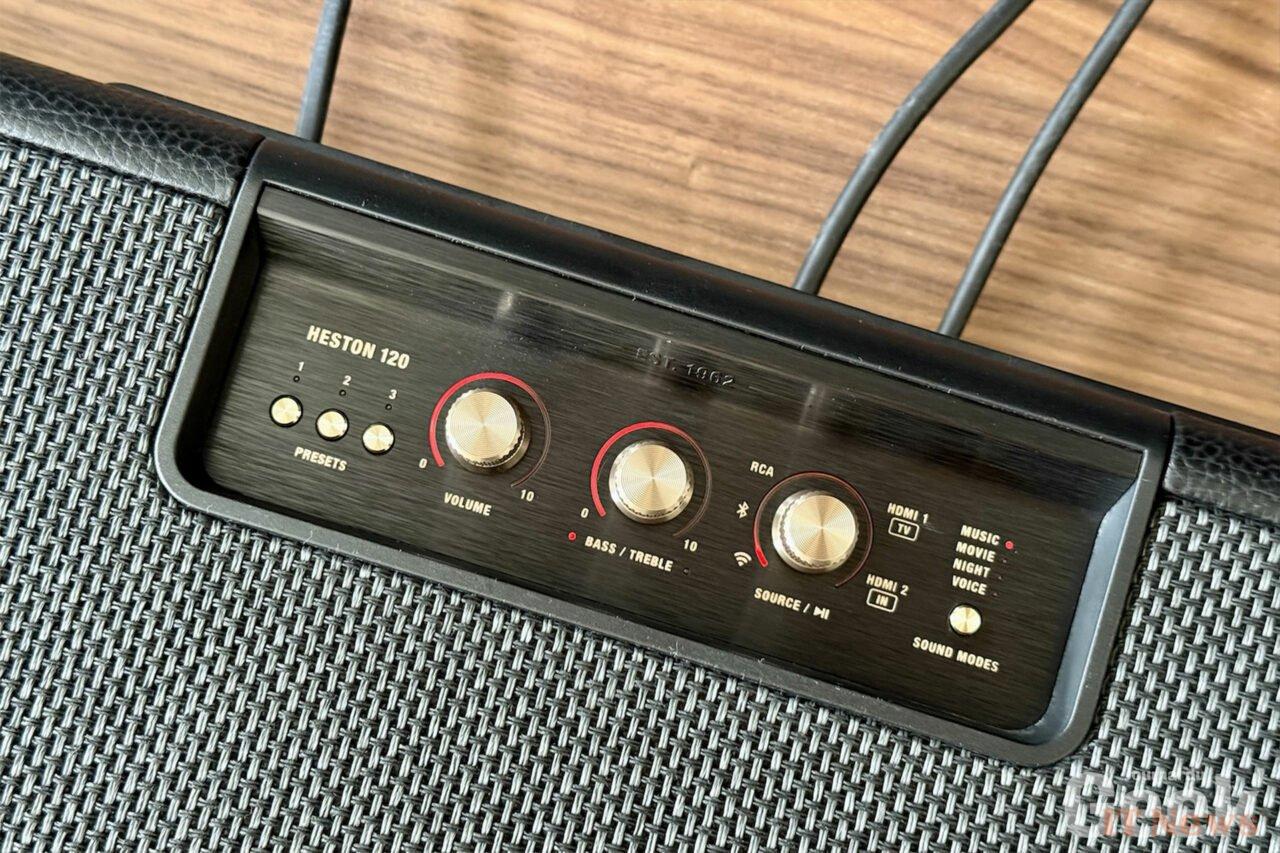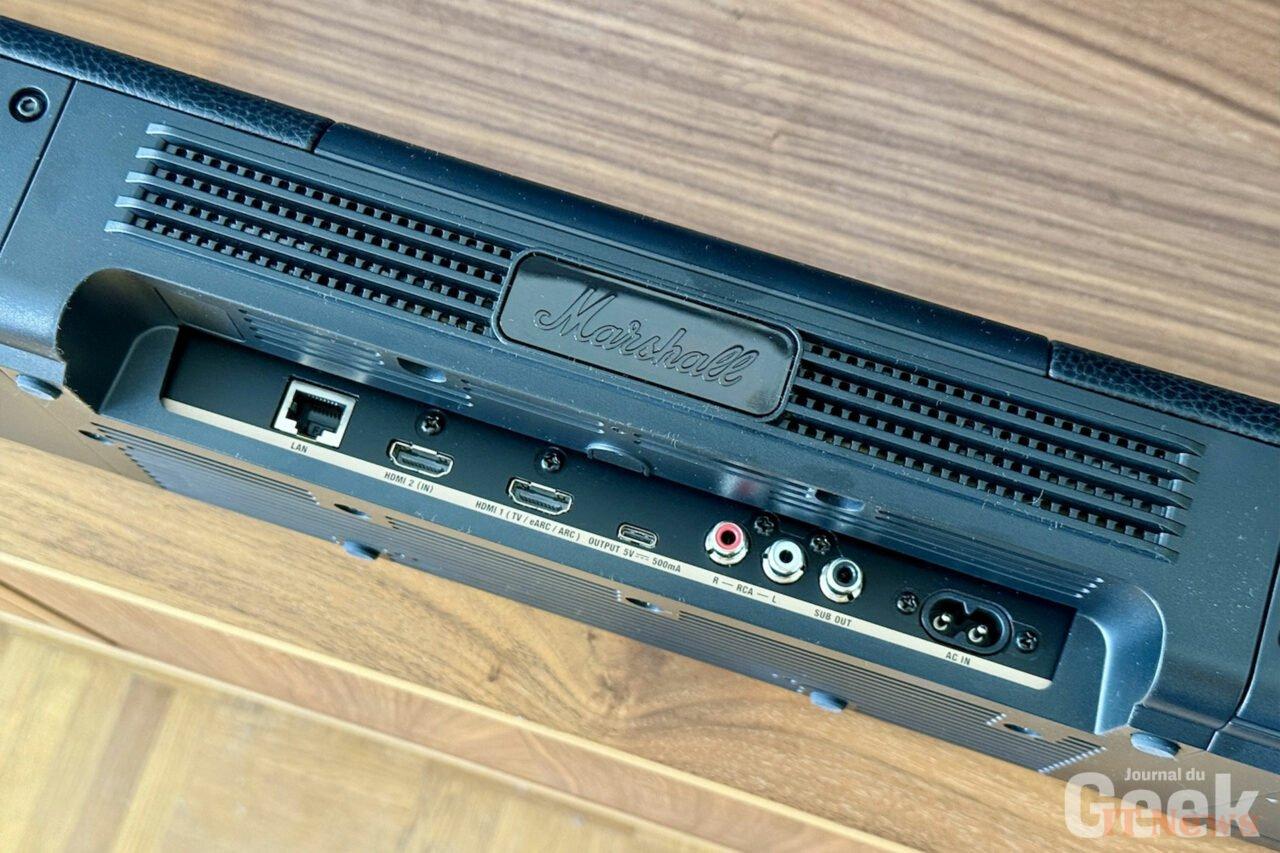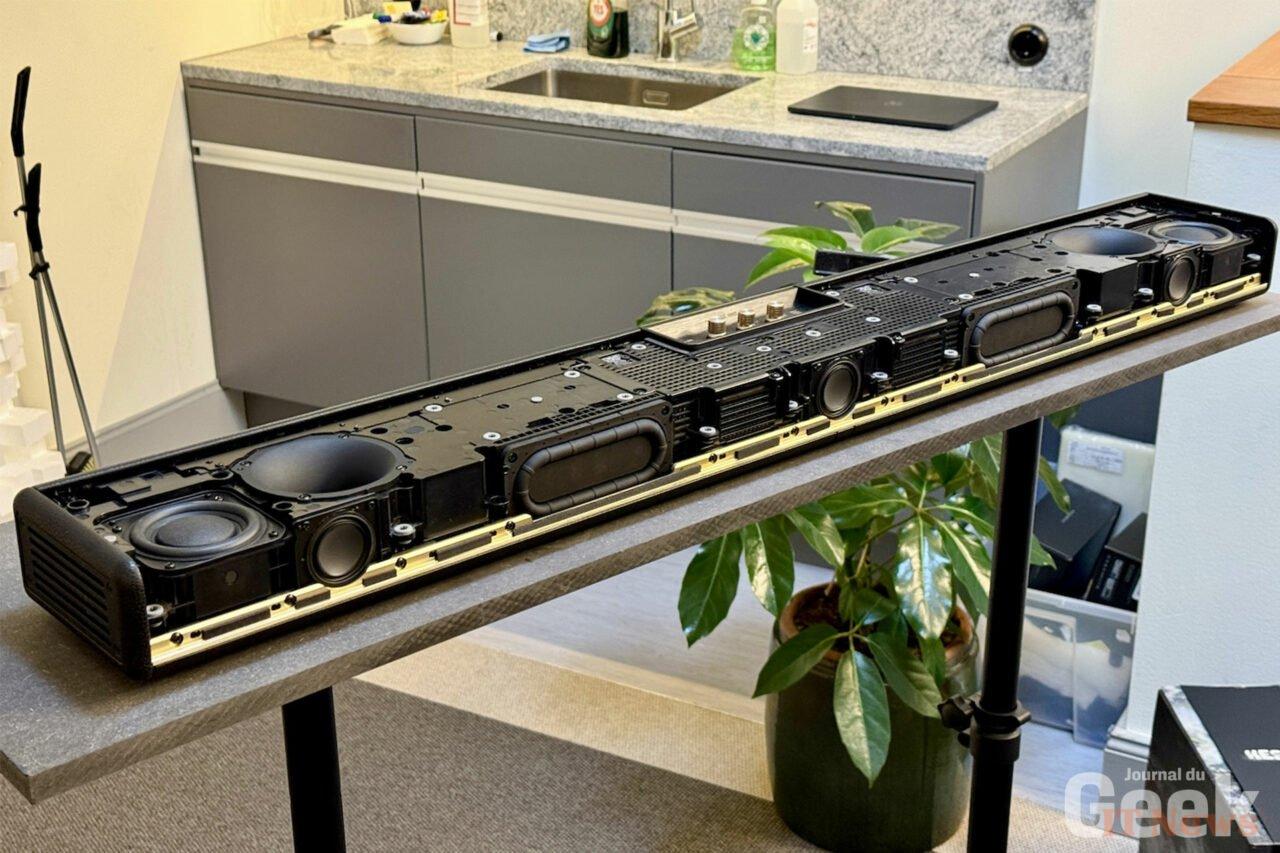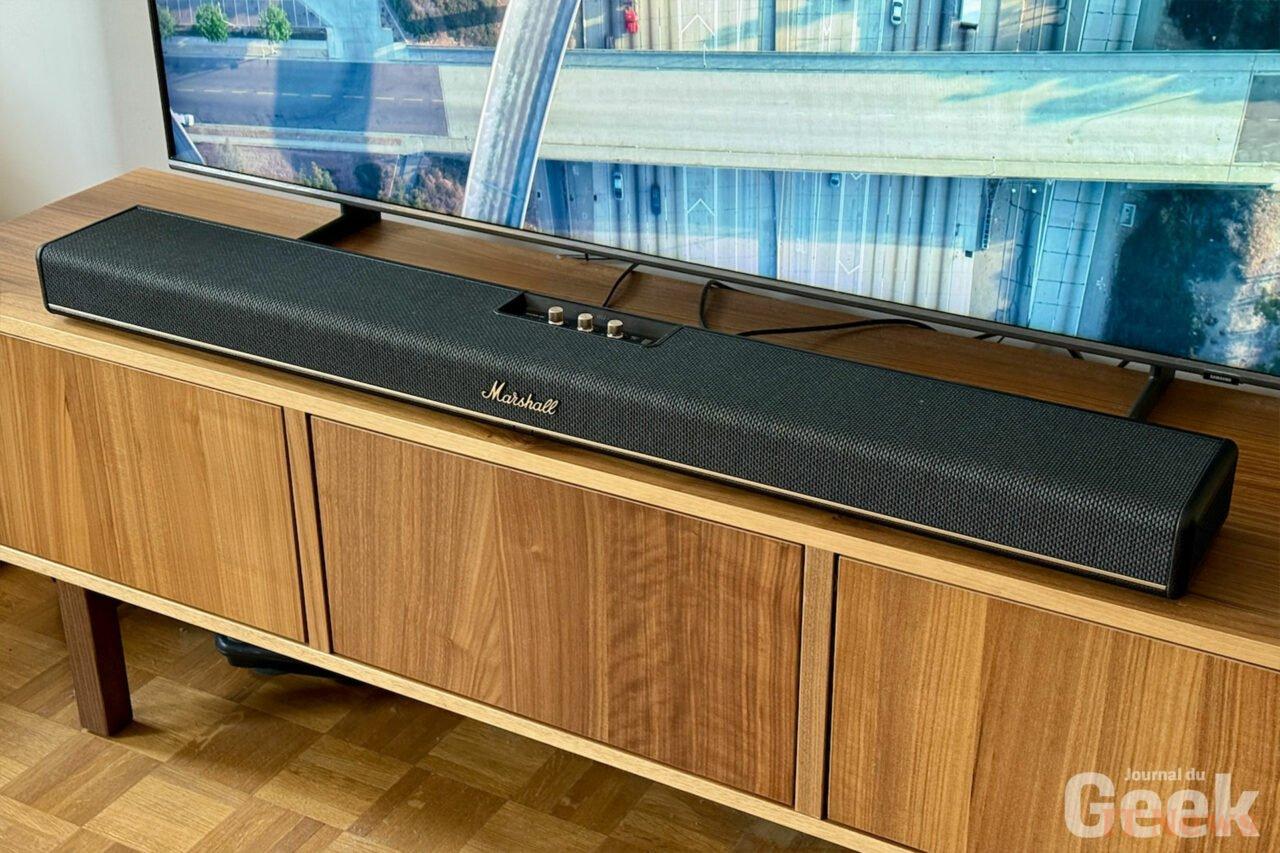Marshall is seriously entering the home theater market. With the Heston 120, its first Dolby Atmos and DTS:X compatible soundbar, the British brand is making a big impact. Its highly identifiable design, unapologetic rock DNA, solid audio performance, and above all, musical capabilities well above average. Its goal? To shake Sonos to its foundations, aiming directly at the Arc Ultra.
Since its merger with the Swedish company Zound in 2023, Marshall has transformed itself. While the brand remains inseparable in the collective imagination from the guitar amps that marked the history of rock, it has gradually established itself in the Bluetooth speaker and headphone market with panache. The recent Emberton III and Monitor III ANC are perfect examples. Now, it's shifting gears by tackling a new territory: home theater.
And Marshall doesn't do things by halves. With a launch price of 999 euros, the Heston 120 is positioned directly opposite the Sonos Arc Ultra. This deliberate premium positioning reflects the brand's ambition: to offer a complete home cinema solution without betraying its musical identity.
A complete range to come
During a visit to Marshall's Stockholm offices, we were able to talk with the engineers who designed this soundbar for nearly two years. Their idea was simple: to create a product that respects the audio standards of modern home cinema (Dolby Atmos, DTS:X), while remaining faithful to what Marshall does best: music. And this, without falling into the anonymous pitfalls of all-black plastic soundbars, with a bland and all-purpose design.
The Heston 120 is not alone: it will soon be accompanied by a more accessible version, the Heston 60, and by a dedicated subwoofer, the Heston Sub 200, both expected by the end of the year.
A design that makes noise... visually
If you like discreet and invisible soundbars, move on. The Heston 120 is the complete opposite. It fully embraces its Marshall look. With its dimensions of 110 x 7.6 x 14.5 cm (for 7 kg), it imposes its style with its famous logo on the front, its copper border, and its woven grille on the front and on the top. It is clearly an extension of the visual universe of the brand's guitar amps.
The sides and back are dressed in a leather-like material, in reality well-imitated polyurethane, while the ends are protected by aluminum grilles. The assembly is very clean, and the object inspires confidence. This is not a cheap accessory, it is a true high-end audio product, designed to last - especially since Marshall has made an appreciable effort on repairability: grilles, buttons, transducers, and printed circuits, everything is removable and replaceable.
At the top, there are three buttons and three haptic potentiometers, a direct nod to guitar amps. They're not just there for decoration: the dials allow you to control the volume, bass/treble, and sources. A final button allows you to navigate between sound modes. Everything is accompanied by a very classy red LED border. Once again, we're at Marshall, and it shows.
A well-stocked connectivity, wired or wireless
In terms of connectivity, the Heston 120 is well equipped: an HDMI passthrough input, an HDMI eARC (2.1) output, an Ethernet port, a USB-C port, two RCA (stereo and mono), as well as the power port. So you can connect a lot of things to it: turntable, Apple TV, an external subwoofer, etc. No voice assistant here, but two integrated microphones intended solely for acoustic calibration of the room.
For wireless, we are spoiled: Bluetooth 5.3 compatible with Auracast (SBC, AAC, LC3 codecs), Wi-Fi 6 with support for AirPlay, Google Cast, Spotify Connect and Tidal Connect. In short, everything you need to send audio from your phone, your computer or your favorite app.
A simple but effective app
For this test, we were able to access the brand new Marshall mobile application, which will accompany the release of the Heston 120. It remains deliberately simple, far from some gas factories. But it gets to the essentials: source selection, volume control, 5-band equalizer, calibration, lip sync, and four preset sound modes (music, movie, night, voice).
Navigation is fluid, clear, and uncluttered. And above all, it allows you to harness the full power of the device without relying exclusively on physical buttons. Another good point: everything works without a mandatory account.
It's got it under the hood
Behind its vintage look, the Heston 120 hides a modern and ambitious architecture: 11 Class D amplifiers for a total of 150 W, two 3" midrange speakers, two 0.8" tweeters, five 2" full-range speakers and, above all, two 2" x 5" rectangular woofers. These required no fewer than 17 prototypes before satisfying the engineers, which shows the attention paid to bass reproduction.
And frankly, you can hear it. The bass is powerful and deep. In many cases, you can simply do without a dedicated subwoofer, which is rather rare for this type of product. Whether in music or movies, the Heston 120 delivers. Action scenes are banging, explosions rumble, and electro drops make the sofa vibrate. And if it's too much? The equalizer is there to allow you to rebalance the whole thing to your taste.
This bass management is also reminiscent of the Sound Motion technology used by Sonos (from the Dutch startup Mayht, acquired in 2022). We are at a relatively equivalent level of control.
Correct spatialization, but perfectible
With its Dolby Atmos and DTS:X compatibility, we expected Marshall to turn the corner on the surround rendering. The observation is a little more nuanced here. If the soundstage is wide, well extended horizontally, the verticality leaves a little to be desired, making it difficult to create a 3D sound bubble.
It's not bad all the same: the lateral effects are very present, the dialogues ultra clear, even in the middle of sonic chaos. But don't expect to feel helicopters passing over your head. We are still a slight notch below certain bars which achieve this a little better (without always succeed, by the way).
Designed for music above all
Where the Heston 120 puts everyone in agreement is on the music. And that's quite normal, coming from Marshall. After a quick pass through the equalizer to calm down the sometimes overly generous bass, we discover a very balanced restitution: clear mids, well-defined vocals, precise but not aggressive treble. Each instrument finds its place, and the whole is very pleasant to listen to, regardless of the style.
Classical, rock, jazz, electro, hip-hop, everything comes through without forcing. Even at moderate volume, the bar maintains a nice dynamic, which is quite rare. Be careful, however, not to push the volume to the max: beyond 75%, slight distortion may appear.
One small regret, however: for the moment, Dolby Atmos via Apple Music is not available via AirPlay. Apple recently published the specifications necessary for its implementation by third-party manufacturers, and Marshall confirmed to us that a software update will arrive before the end of 2025 to enable this function. For now, only HDMI eARC or Tidal Connect allow you to take advantage of it.








0 Comments